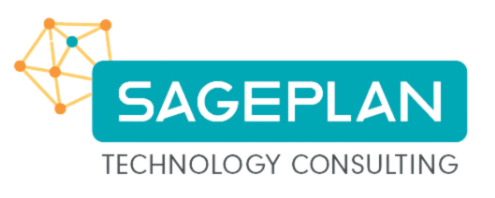Do It Yourself IT? Here's Some Tips.
When folks are starting out in business, it’s tempting to do your own IT for a while, and I get it. When I started my business there were a lot of professionals whose help I could have used, but the budget was tight so I made due.
If that sounds like you, and you are doing your own IT support, then it’s important to be sure you have a plan that covers the same important aspects we focus on to keep our customers safe and secure.
Cybersecurity Protection
Keeping your systems safe from hackers involves layers of protection. As your business grows, you will want to think about increasingly more sophisticated methods for keeping your operations productive and your data safe, but for most small businesses using Windows there are a few basics everyone should have in place:
- Windows Automatic Updates: Every time a new vulnerability is discovered in Windows 10 or 11, Microsoft sends updates to our computers to protect them. But, there’s a catch. You have to have automatic updates enabled for this to work. We’ve seen people turn these updates off because they happen at inopportune times, leaving their computer and their business open to attack. A better choice is to schedule these updates to happen at a time that you are normally not working, which keeps the inconvenience to a minimum.
- Firewalls: The Microsoft operating system has a built-in software Firewall that works well with Windows as the next layer of defense, but a lot of entrepreneurs don’t realize that there is another Firewall that is equally important, and that is the one that comes installed on business and home-office class routers. The router Firewall can keep a lot of threats from ever reaching your computer.
- Antivirus: Microsoft bundles an antivirus tool with Windows called Defender, and this is an area where we believe it’s important to add another layer of protection. Defender will scan your email, browsers, and applications for threats, which is fine, but a scan is only looking for viruses that have already infected your system. We are fans of the tools that Trend Micro offers. They are effective and budget-friendly, and do a much better job of catching and eliminating viruses before they get a chance to cause damage.
- Data Backup: Pretty much everybody is using some sort of cloud service to sync their data these days, which is good to have but not enough to keep you out of trouble if you get hacked. A lot of viruses have the ability to wipe your cloud data before they lock you out of your PC, leaving you in real trouble. We prefer a solution like the one offered by iDrive because it works in a way that will not only keep your data safe if you do get hacked but also make the recovery effort significantly easier.
Cyberattack Prevention
Let’s be clear. For now, there is no such thing as perfect protection from hackers. Regardless of how good your protection is, hackers can and do find ways to get in, and there are several ways that they can circumvent your protective systems if you do not also have the right preventive practices in place. Here are a few of the most important ones:
- Encryption: Make sure that your web browsers, email tools, and Wi-Fi connections are all using their built-in encryption capabilities. This is an easy and effective way to minimize the ability of hackers to use these systems to gain access to your computer. You also want to be sure that you use a VPN connection to access the office when working from home.
- Passwords: Are you still keeping all of your passwords in a spreadsheet? I’ll confess that it took me a while to break this habit, but it’s really important that you do because spreadsheets are an easy target for the bad guys. If you are just starting out you can probably upgrade to any one of the built-in, free password manager tools that all of the main web browsers offer, and there are also some low-cost password vault tools that are helpful in some cases.
- 2-Factor Authentication: A lot of people get annoyed when they have to use a 2-factor authentication tool, but 2-factor authentication is one of the most powerful cyber attack prevention tools that are available. These tools essentially lock access to your data down to only the devices that you personally use, and have been shown to prevent hackers from accessing countless databases over the last few years.
- Security Culture: Being mindful of the ways that hackers operate can go a long way towards preventing an attack. Take the time to learn how to spot suspicious attachments and links in emails and on websites. It’s also a good idea to make sure everyone is careful not to bring in USB drives or other media from outside the office.
Once you have cybersecurity protection and cyber attack prevention in place, you will want to make sure you have a written plan in place that lays out how you will recover from a successful cyber-attack or (more likely) a hardware failure. One or the other is inevitable, and knowing what needs to be done and who will do it is much easier to think about ahead of time than it is when your operations are at a halt. Create a plan and run practice drills from time to time.
Is It Really Okay To DIY My IT?
That’s a tough question for me to answer, but there are a couple of things to consider. First, how well do you really know the ins and outs of cybersecurity, cyber attack prevention, hardware reliability, and all the other things that make an office IT environment safe and reliable? Second, even if you can do it, is it really the best use of your time to do so? Experts in any area (IT, HR, Accounting, etc) can usually do a better job than a DIY effort, and quite often end up saving you time and money as well. If you ever want to talk about offloading your IT duties to us, feel free to schedule a free consultation with me and I’ll be happy to help you decide if, when, and how to get IT off your plate.

